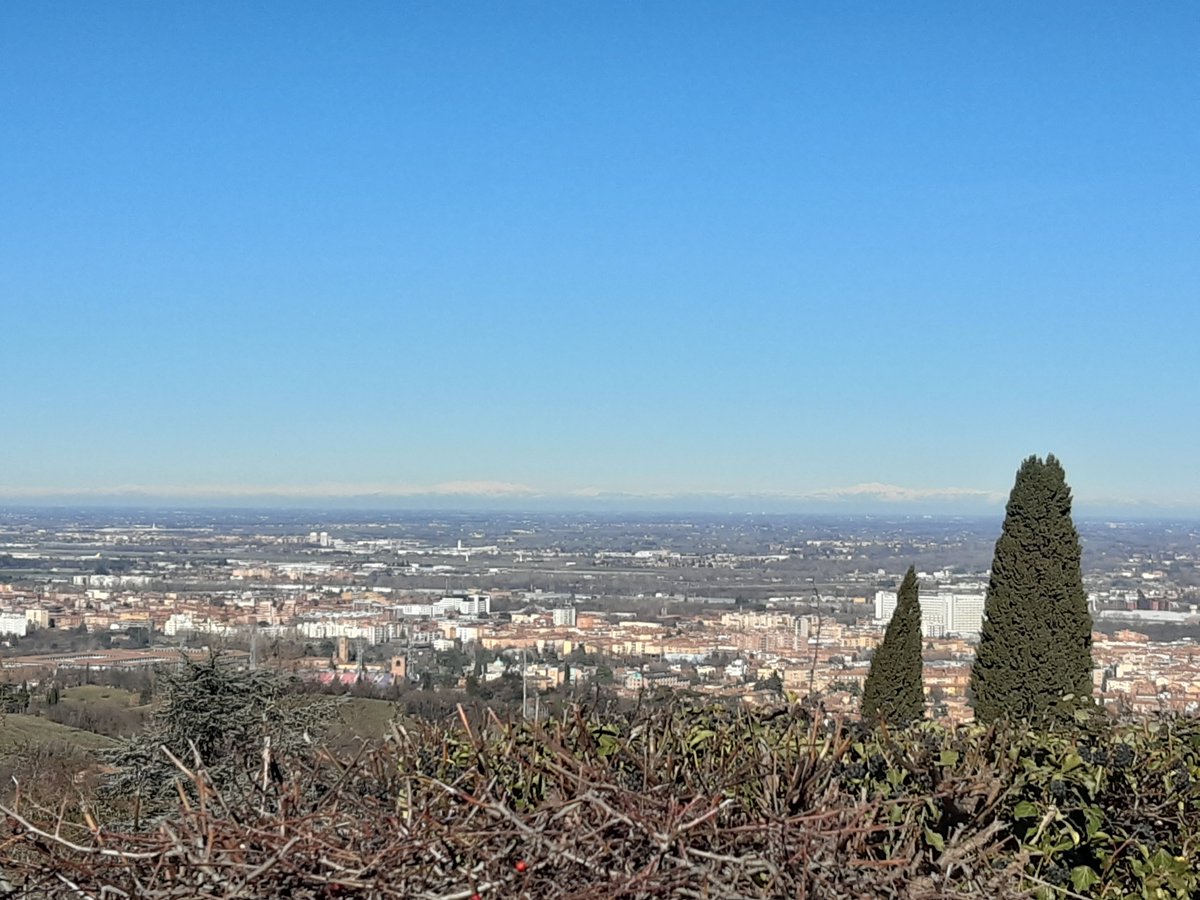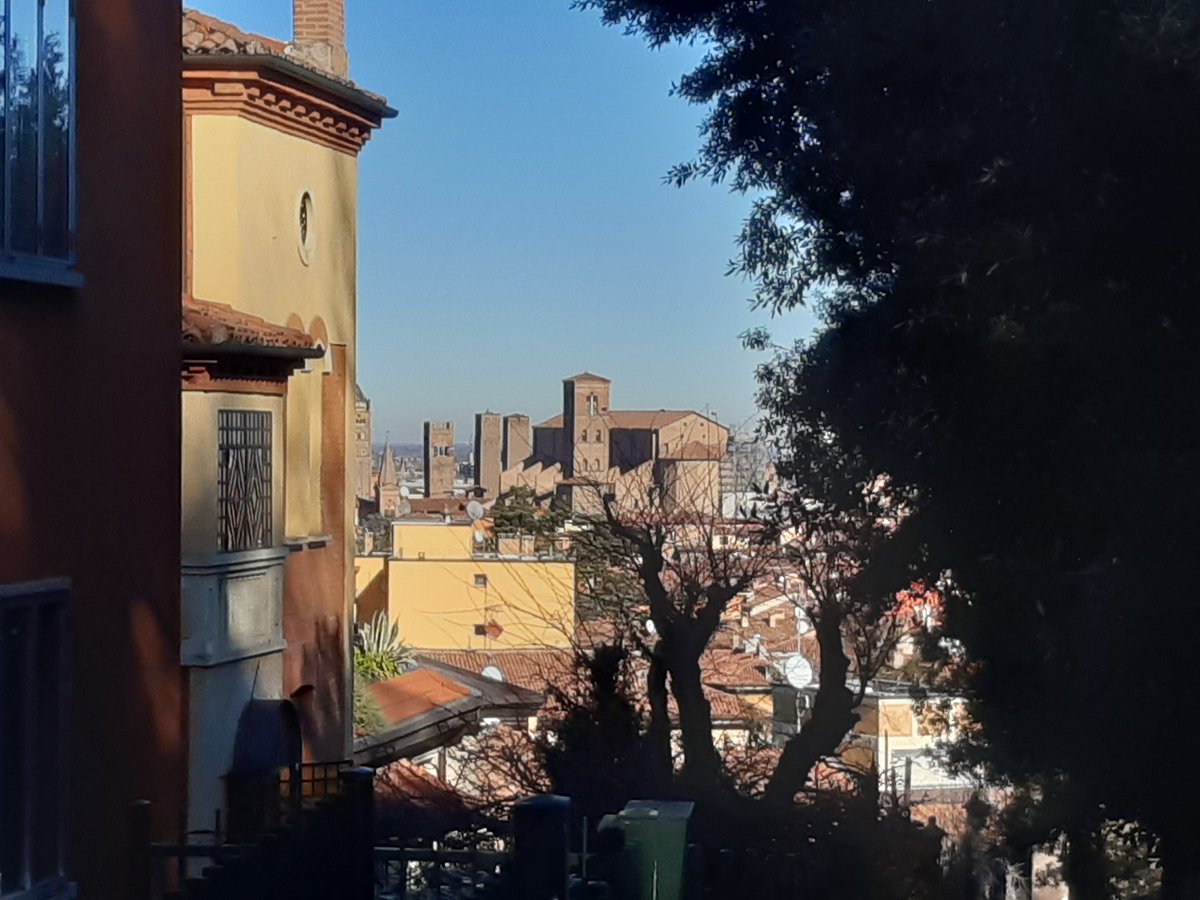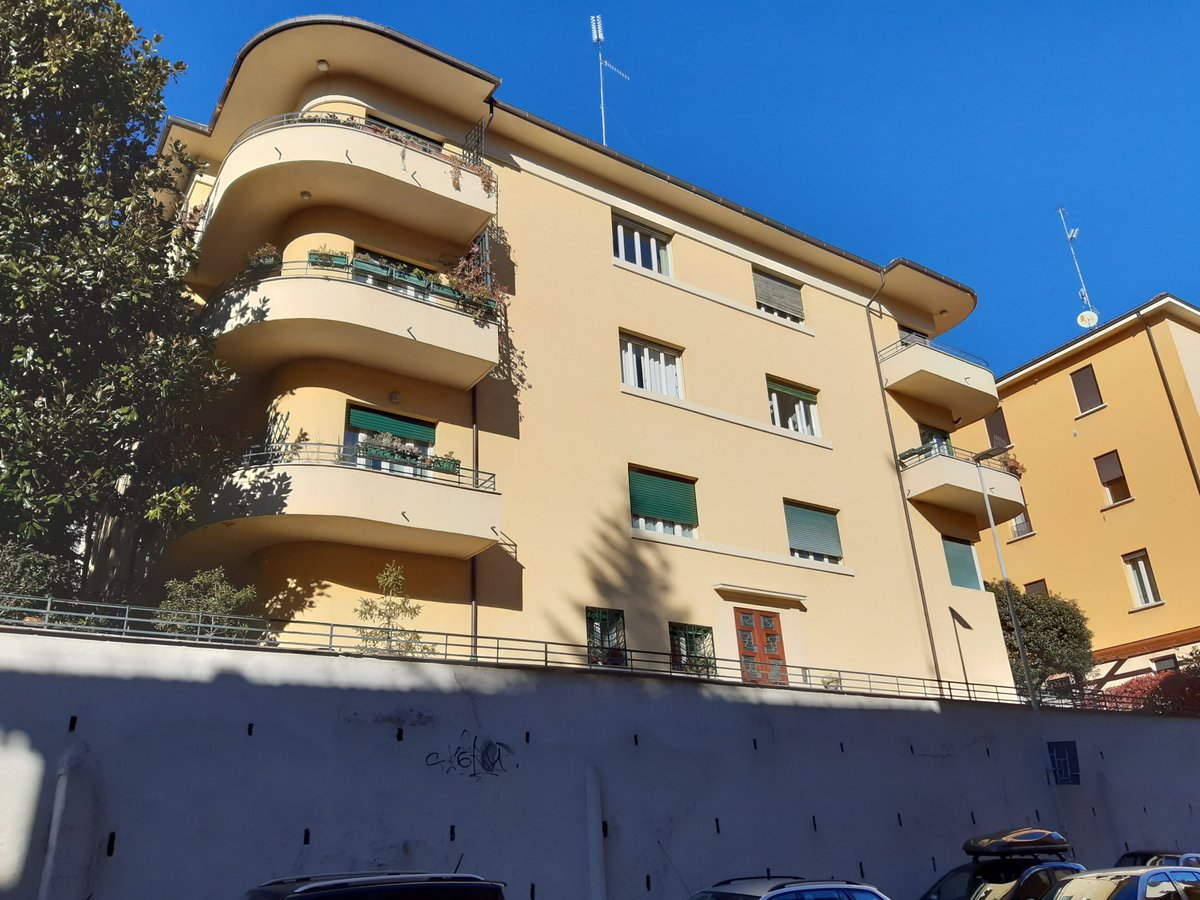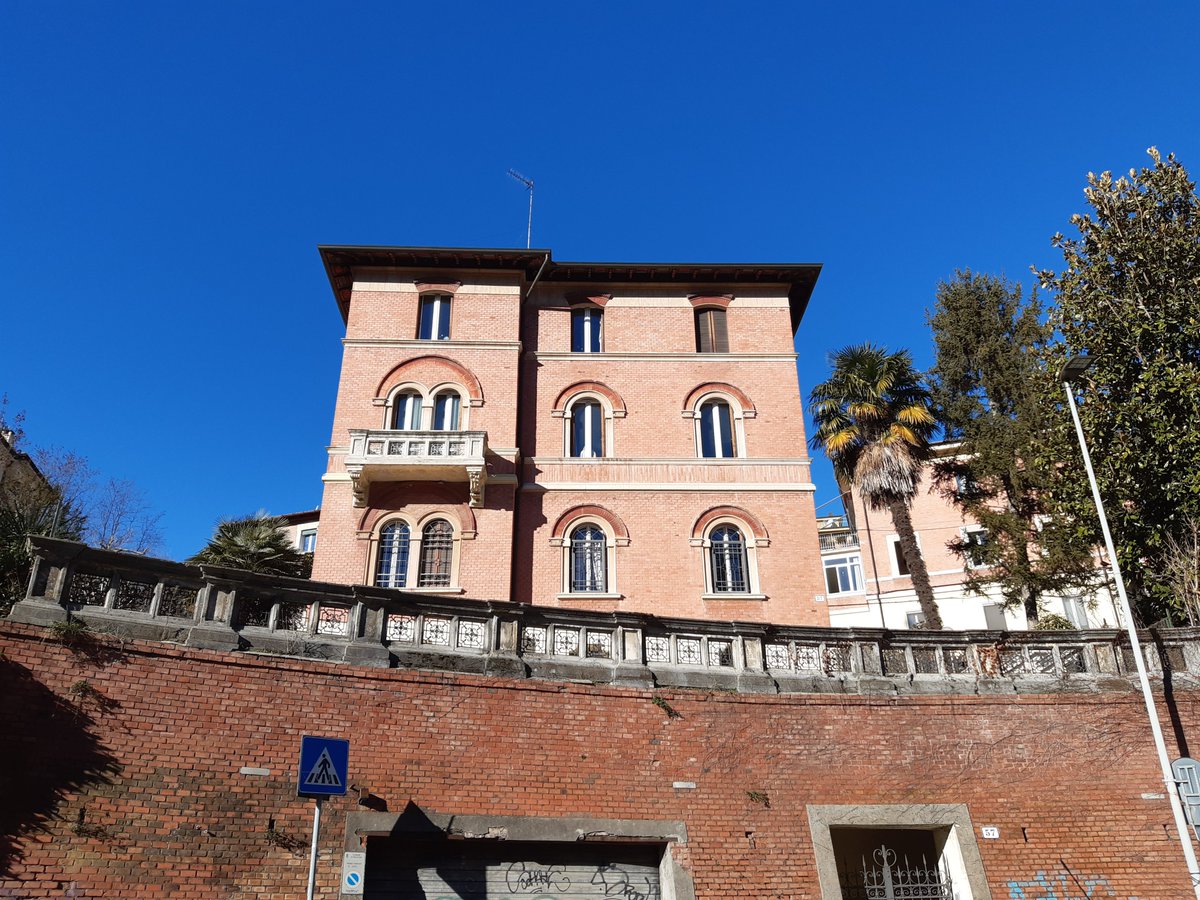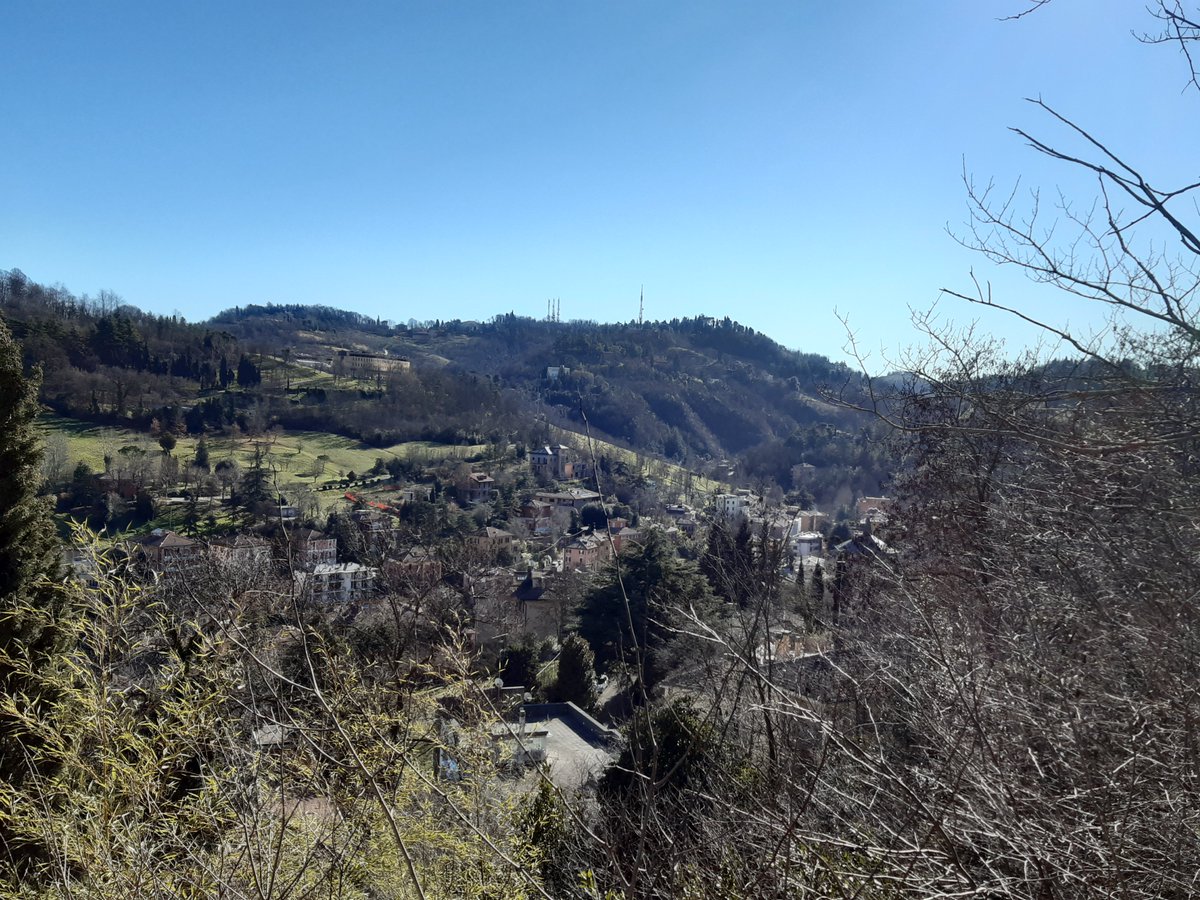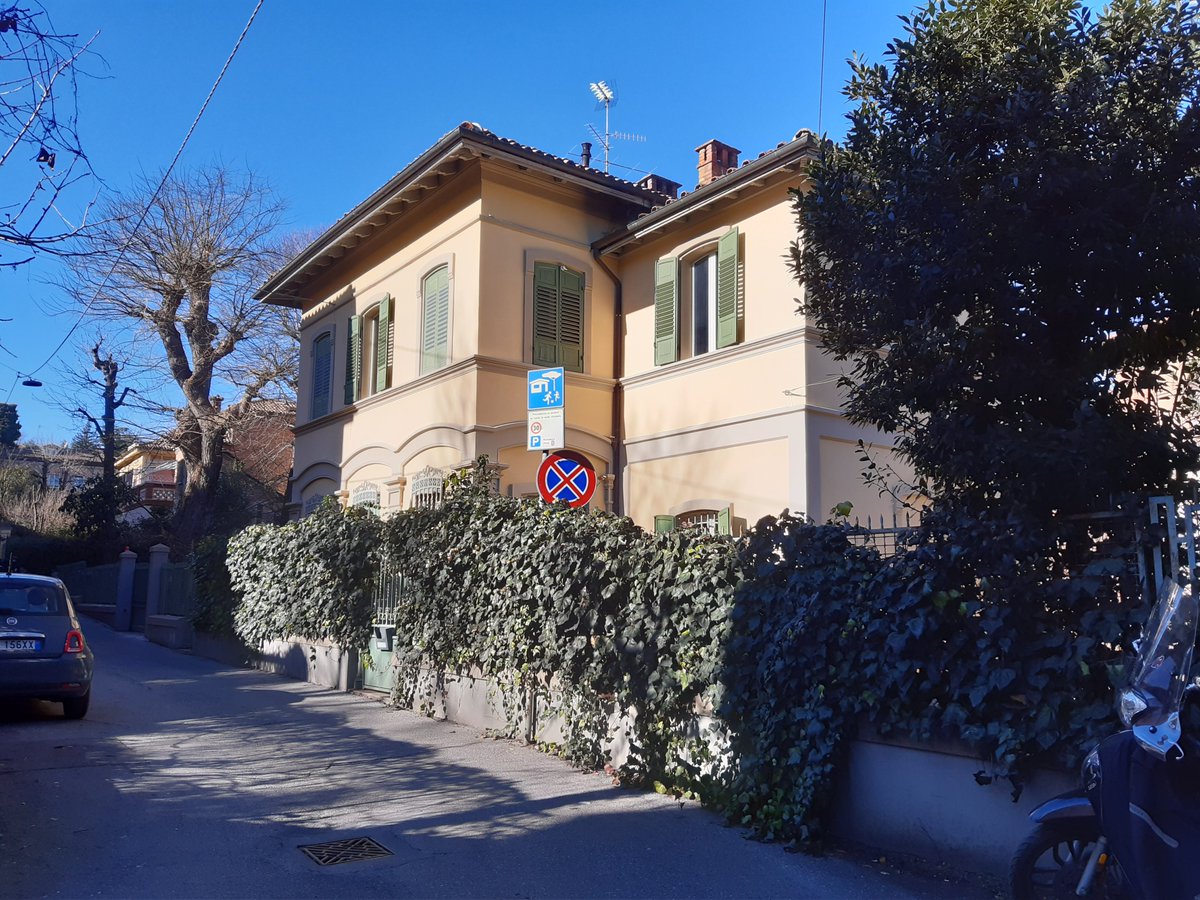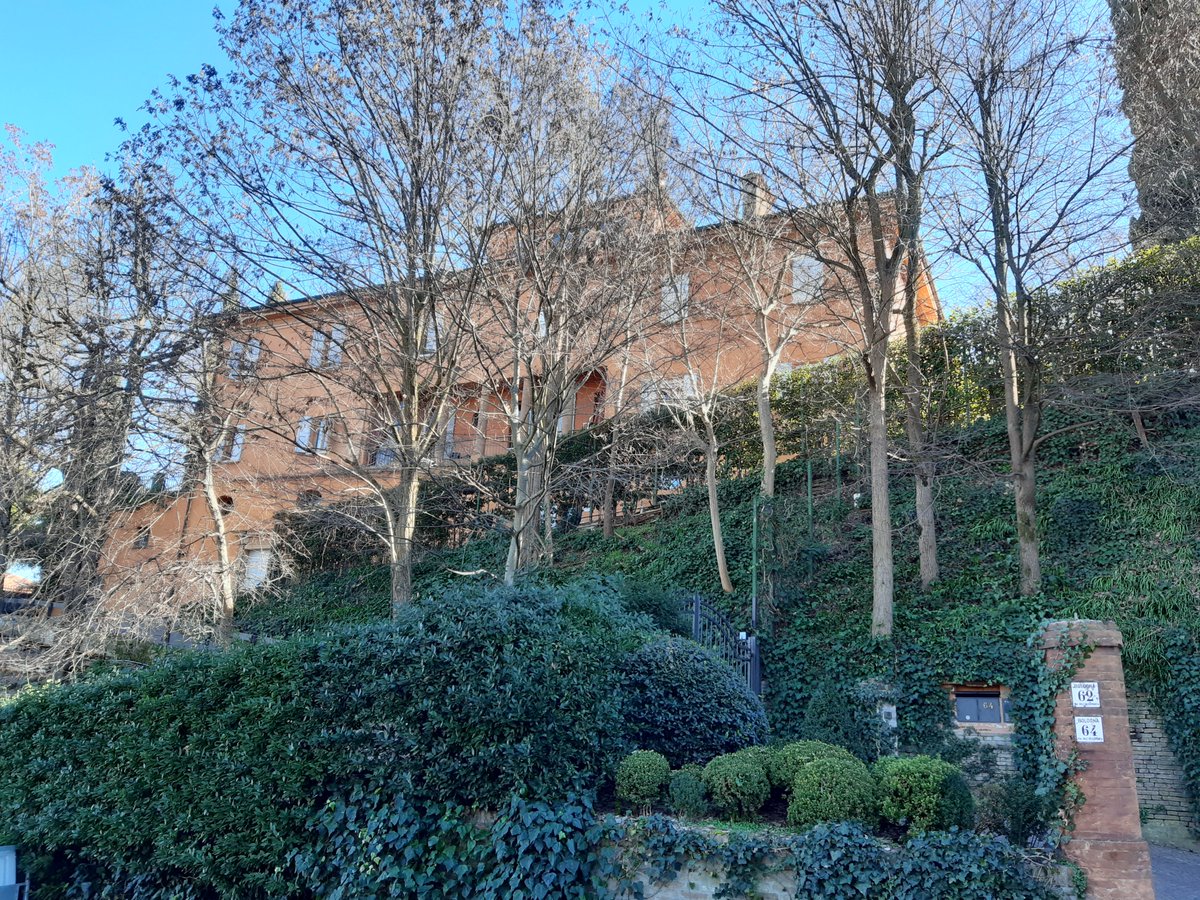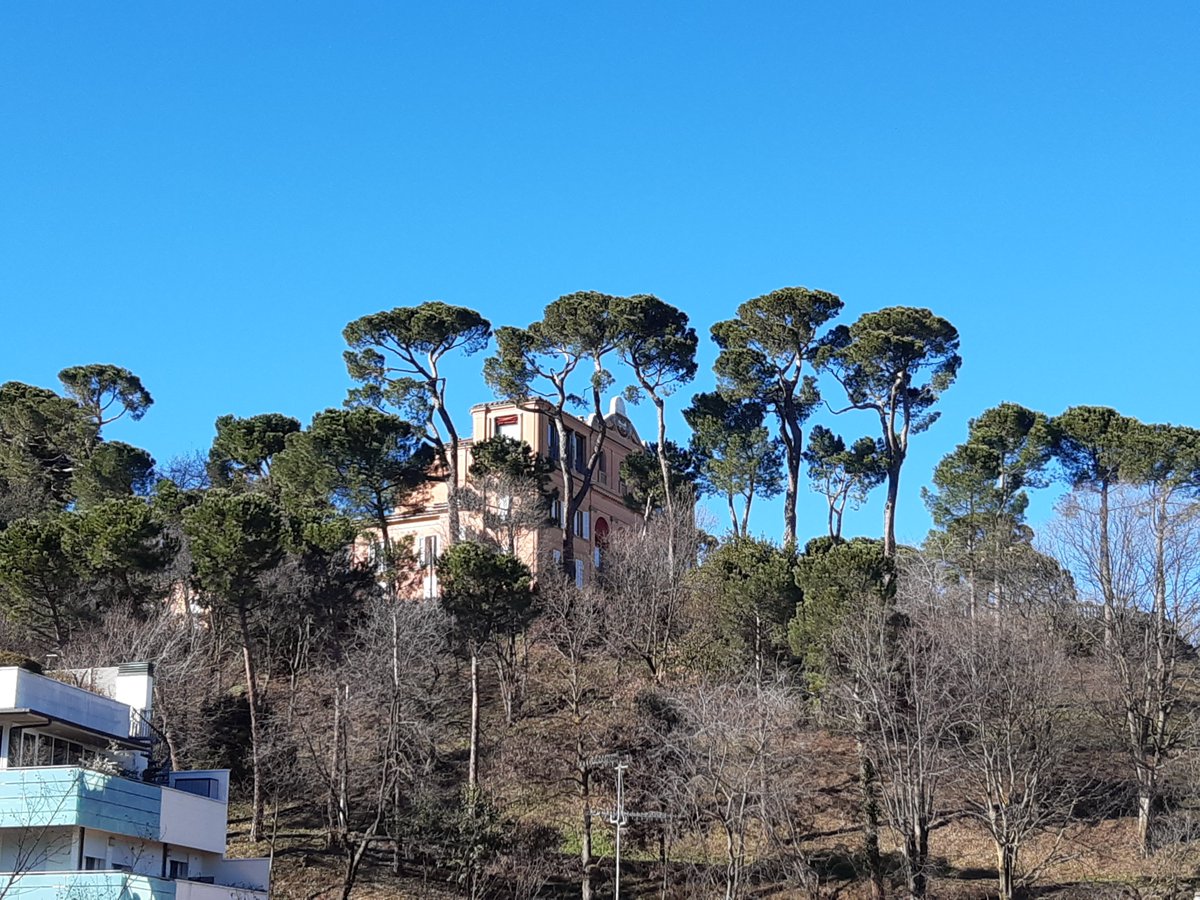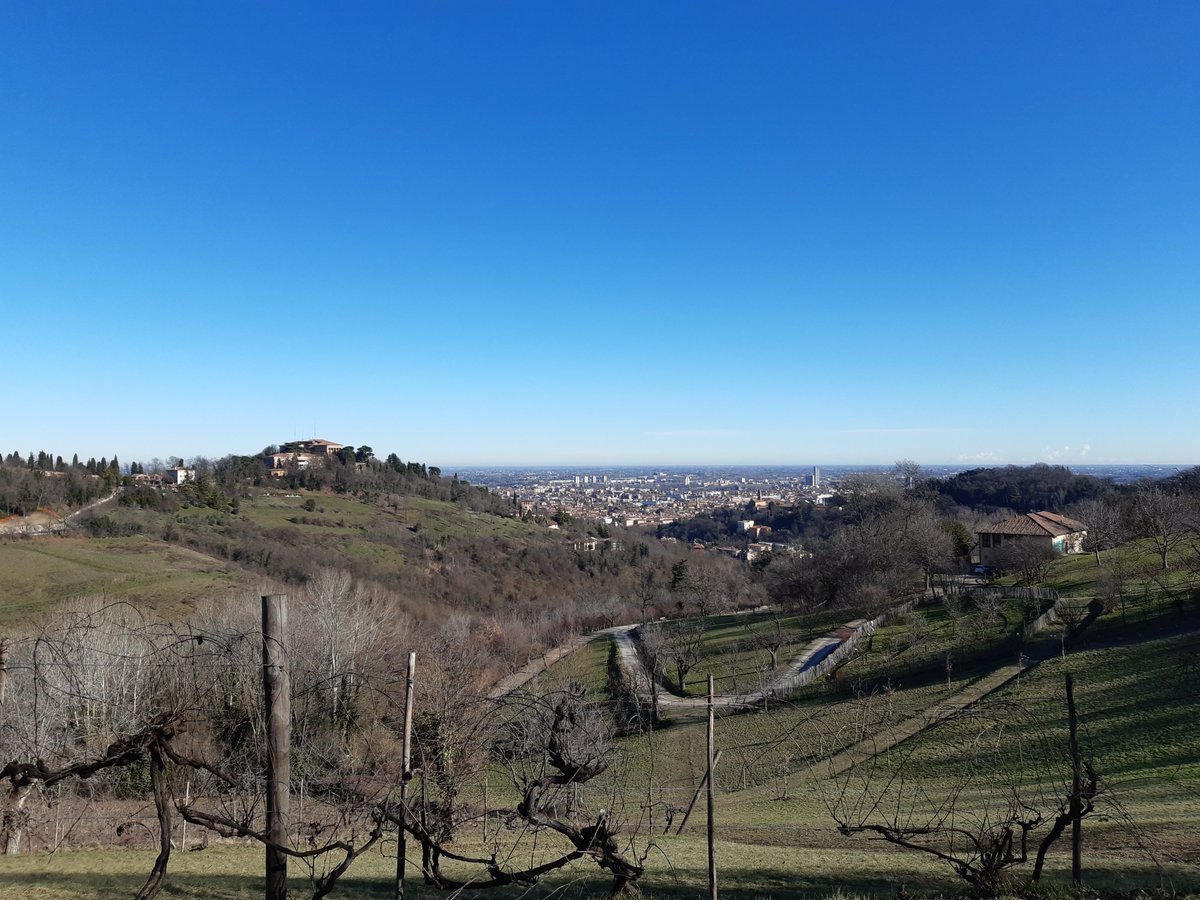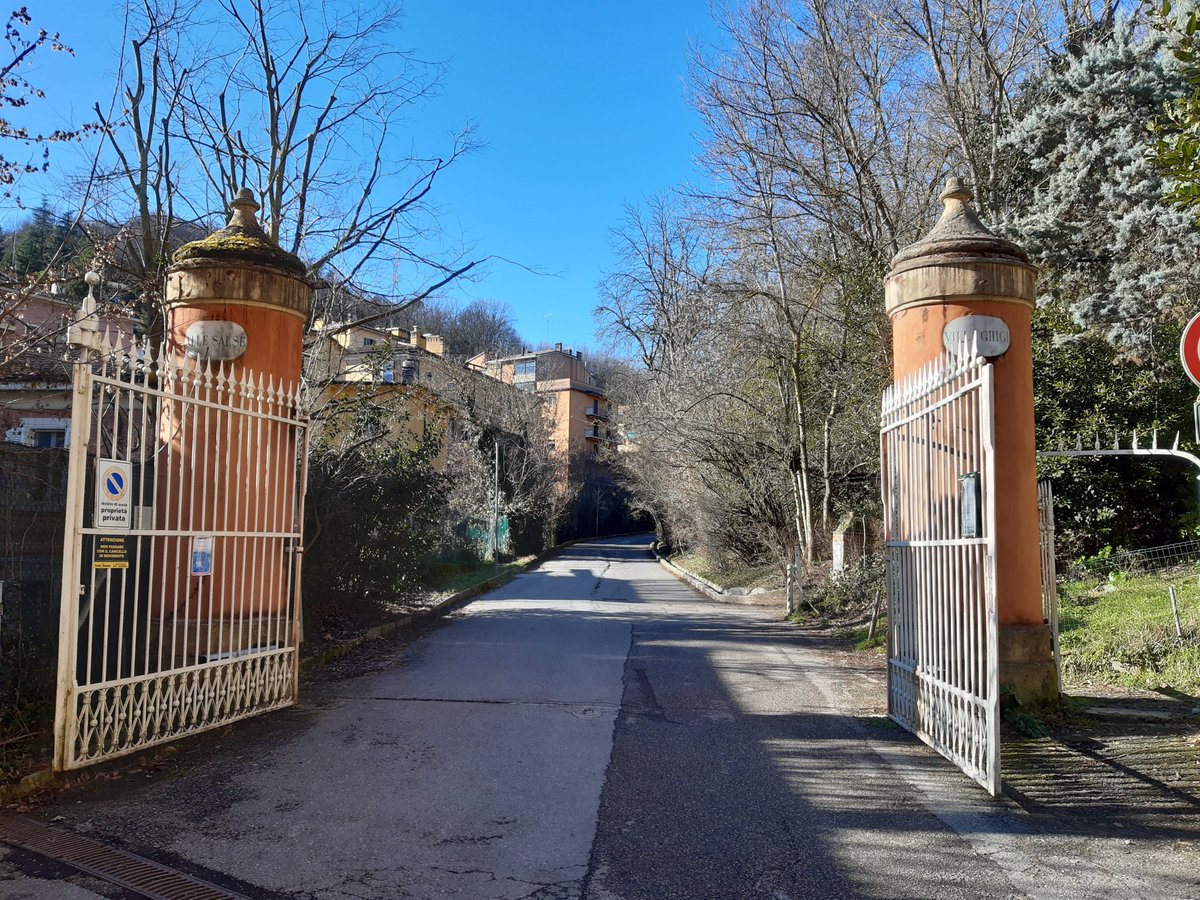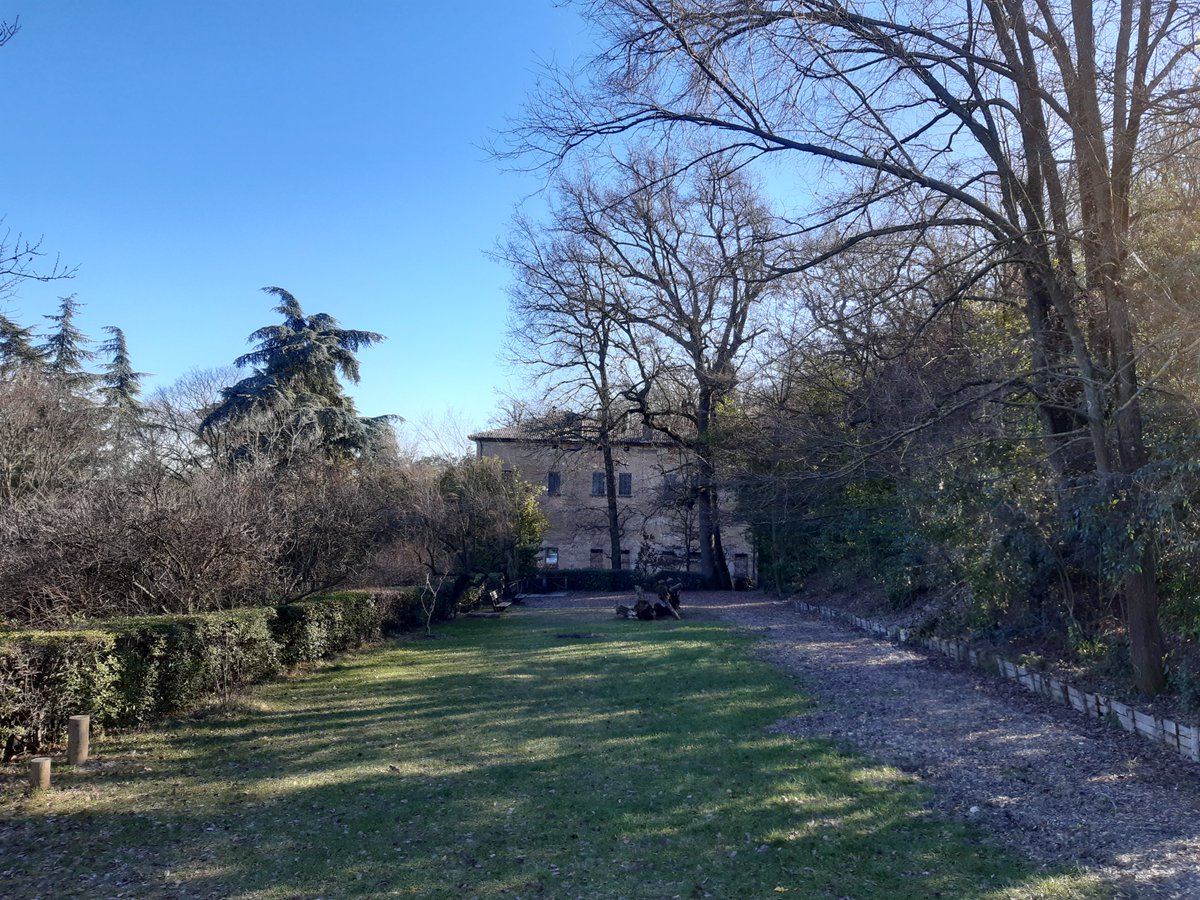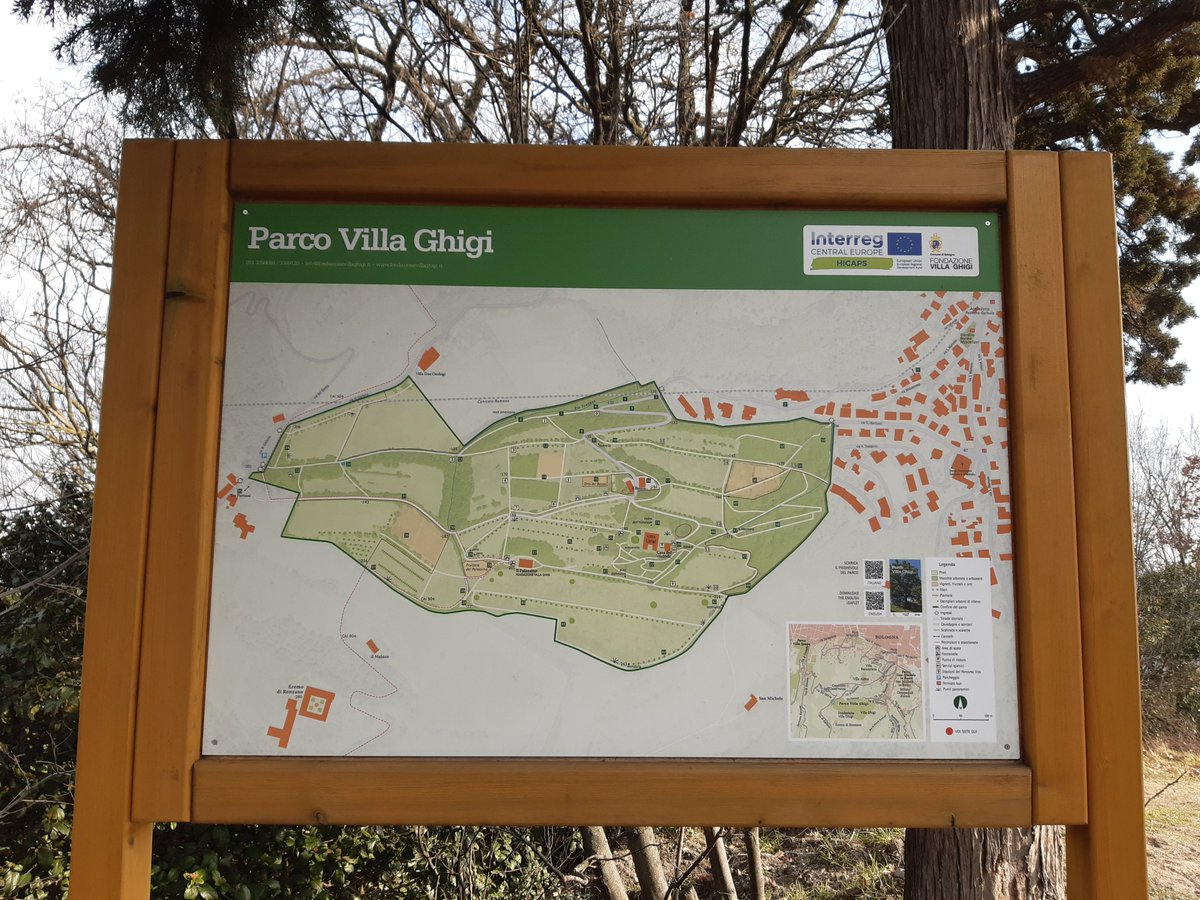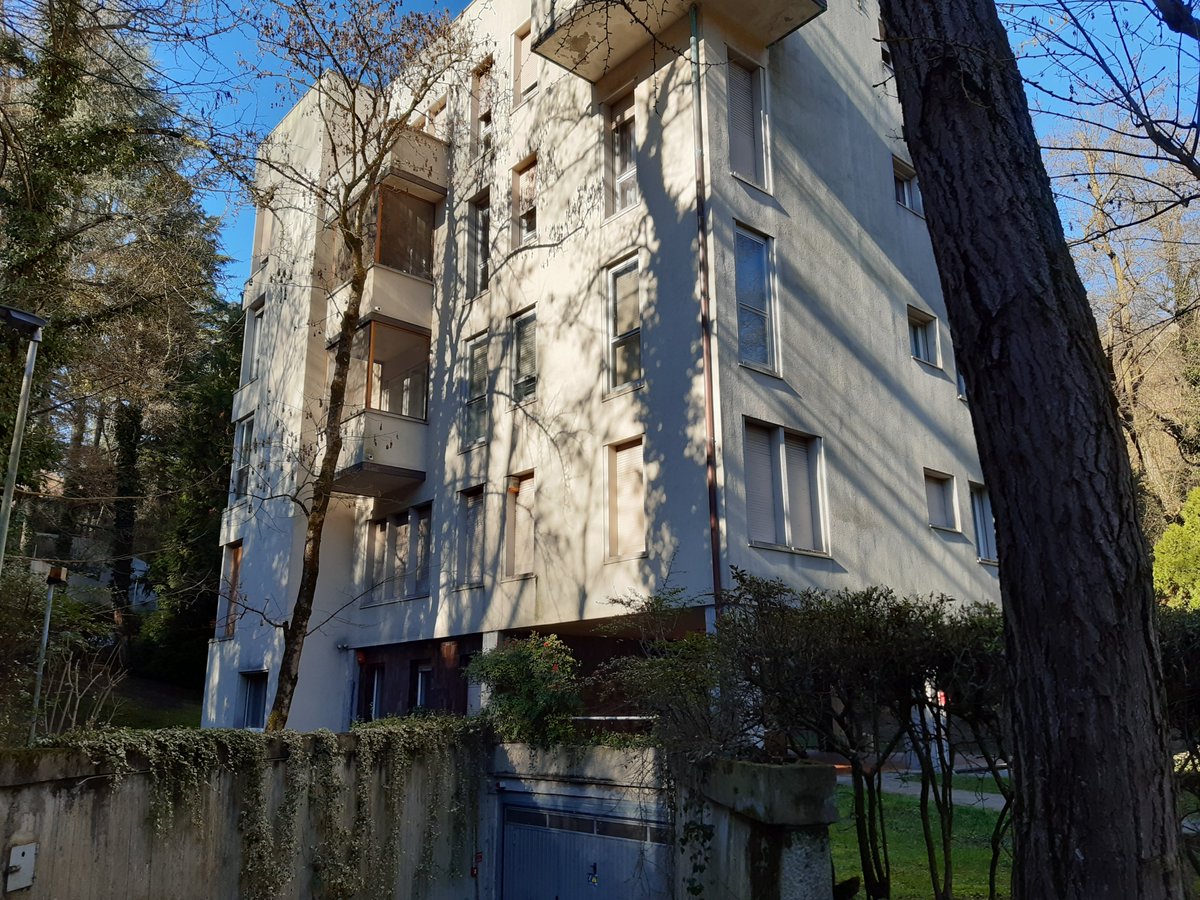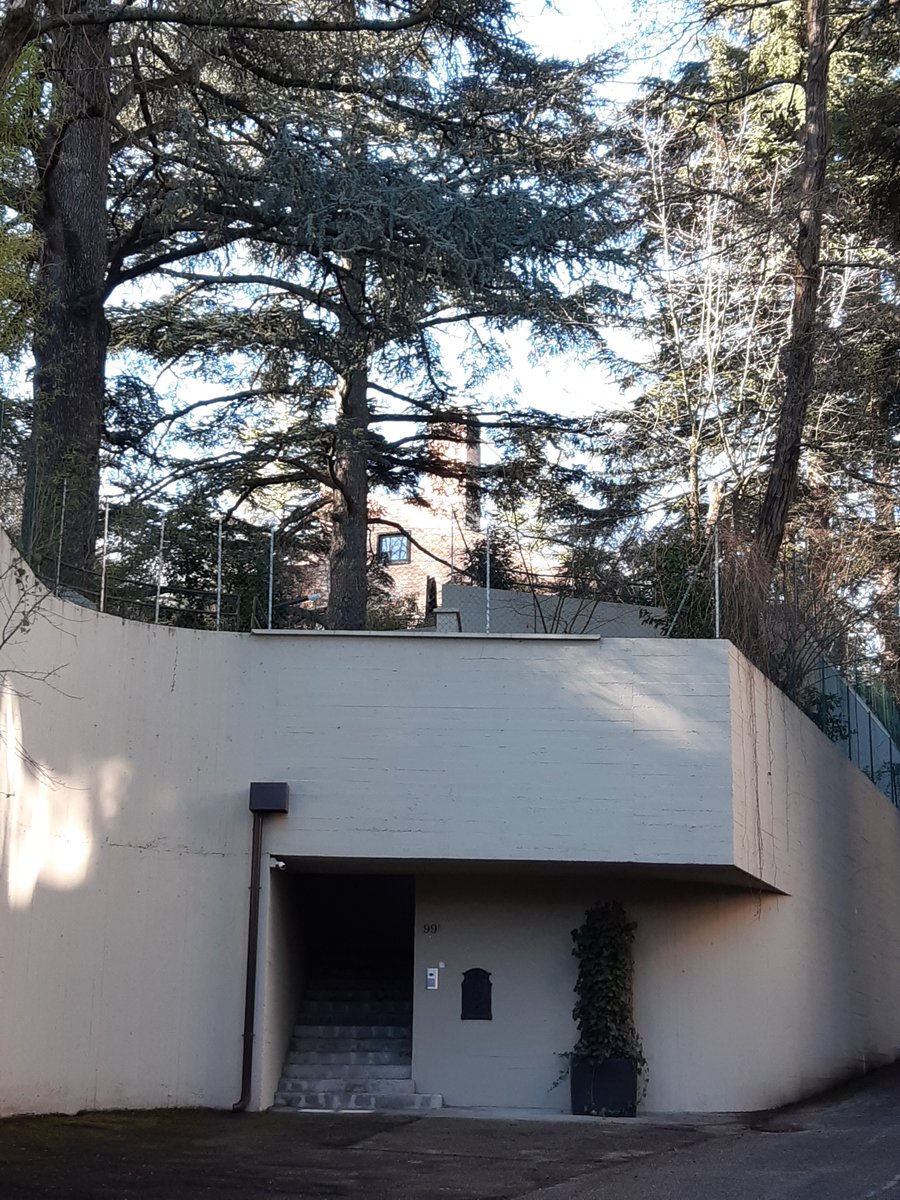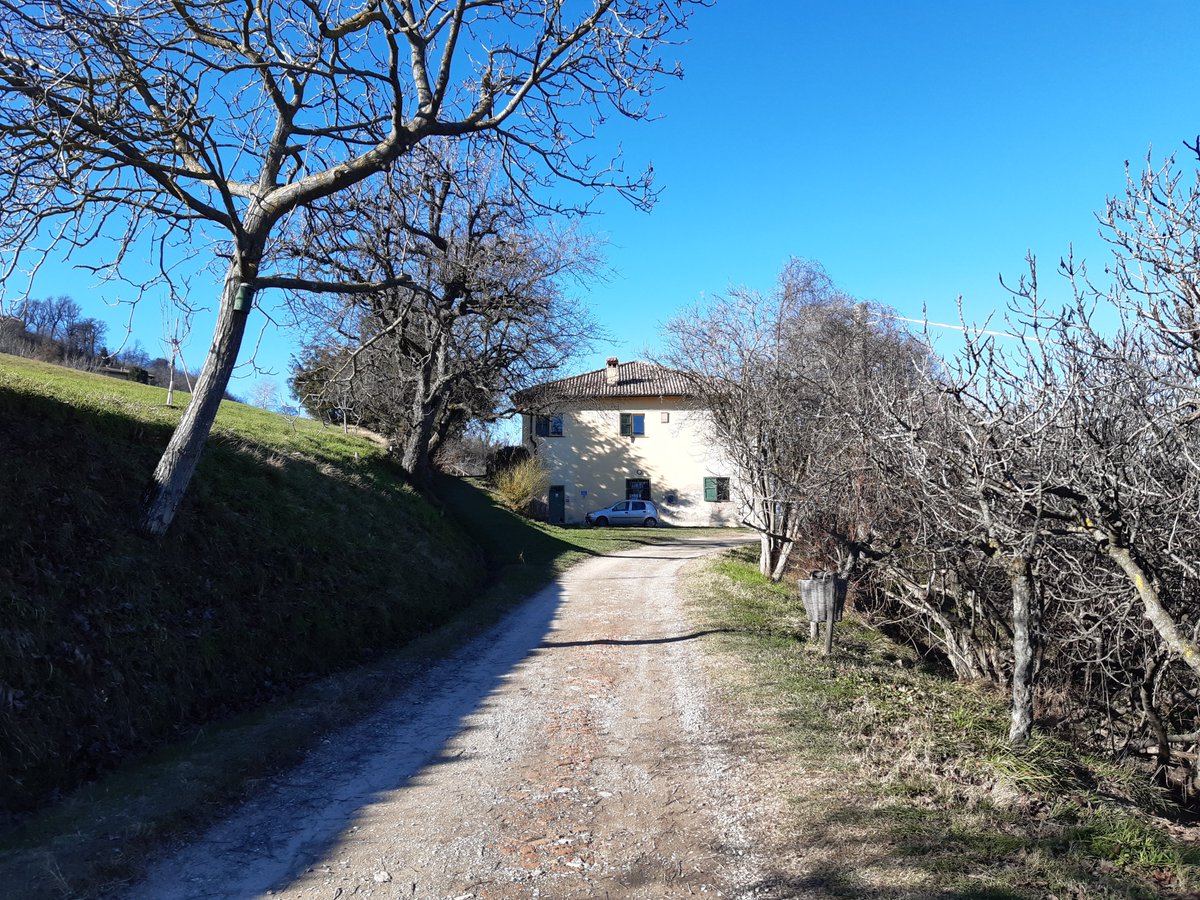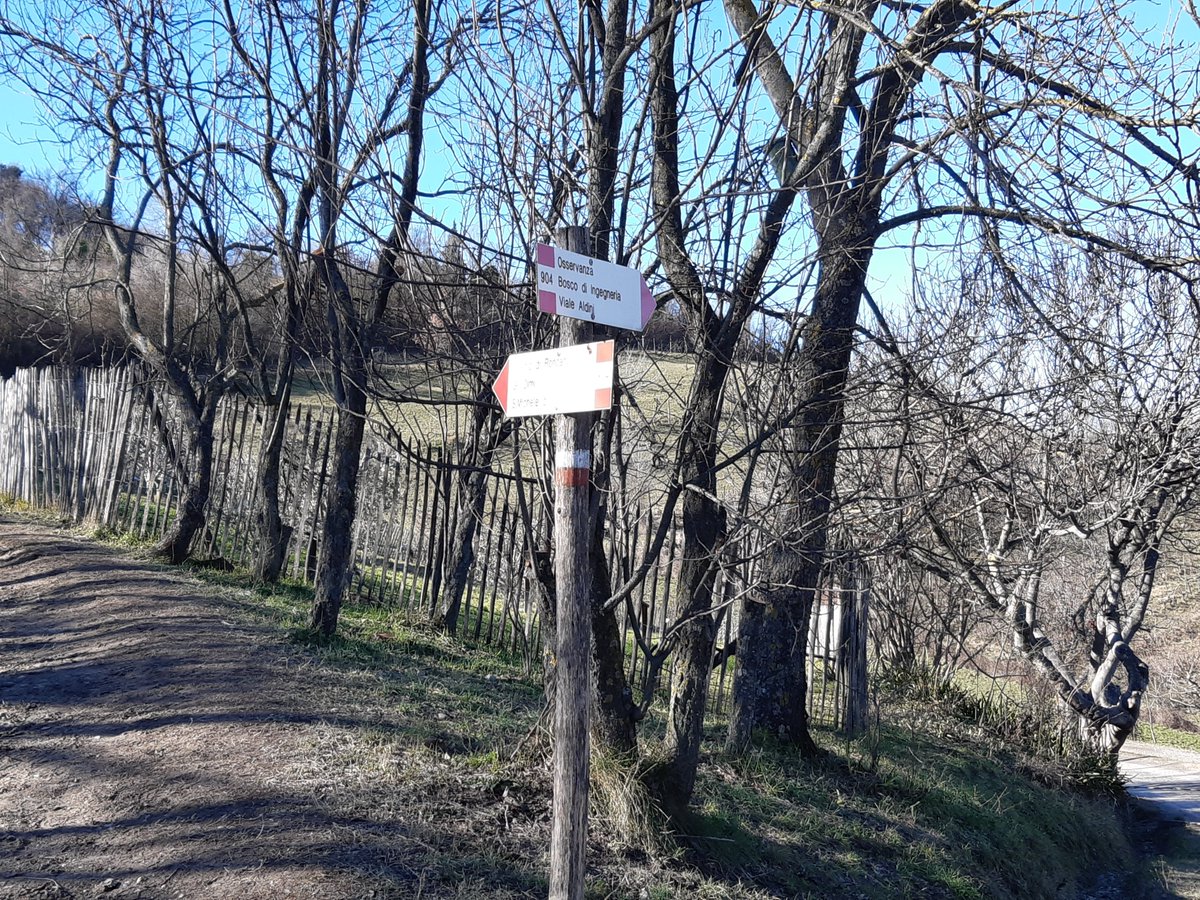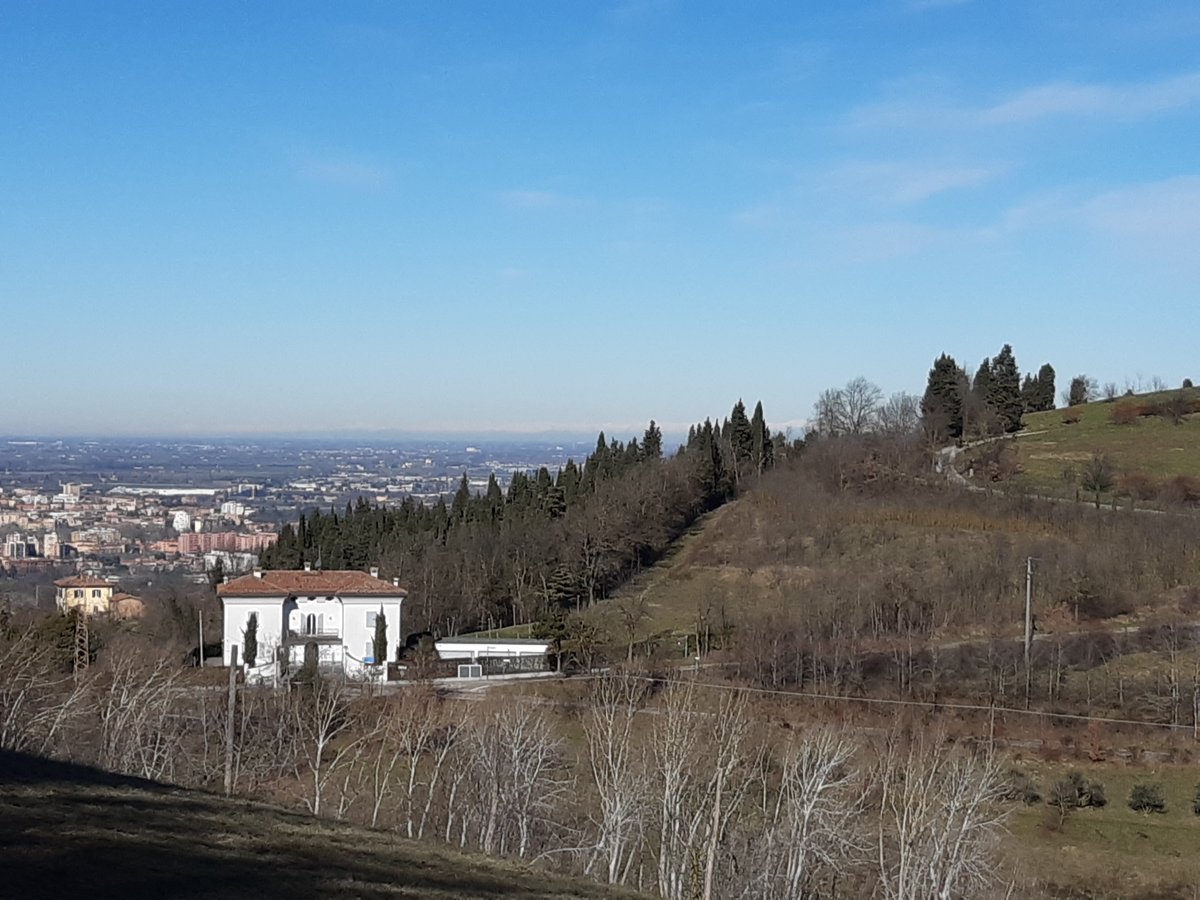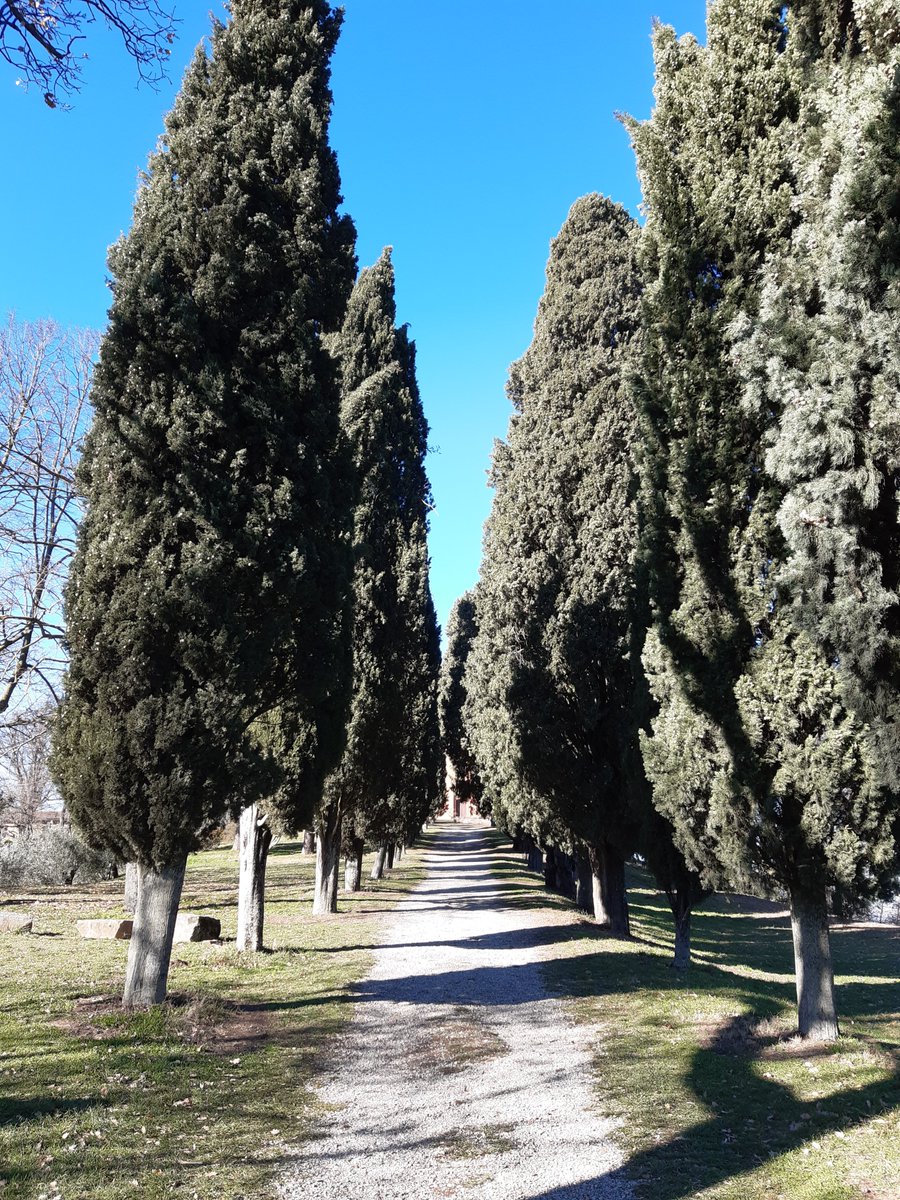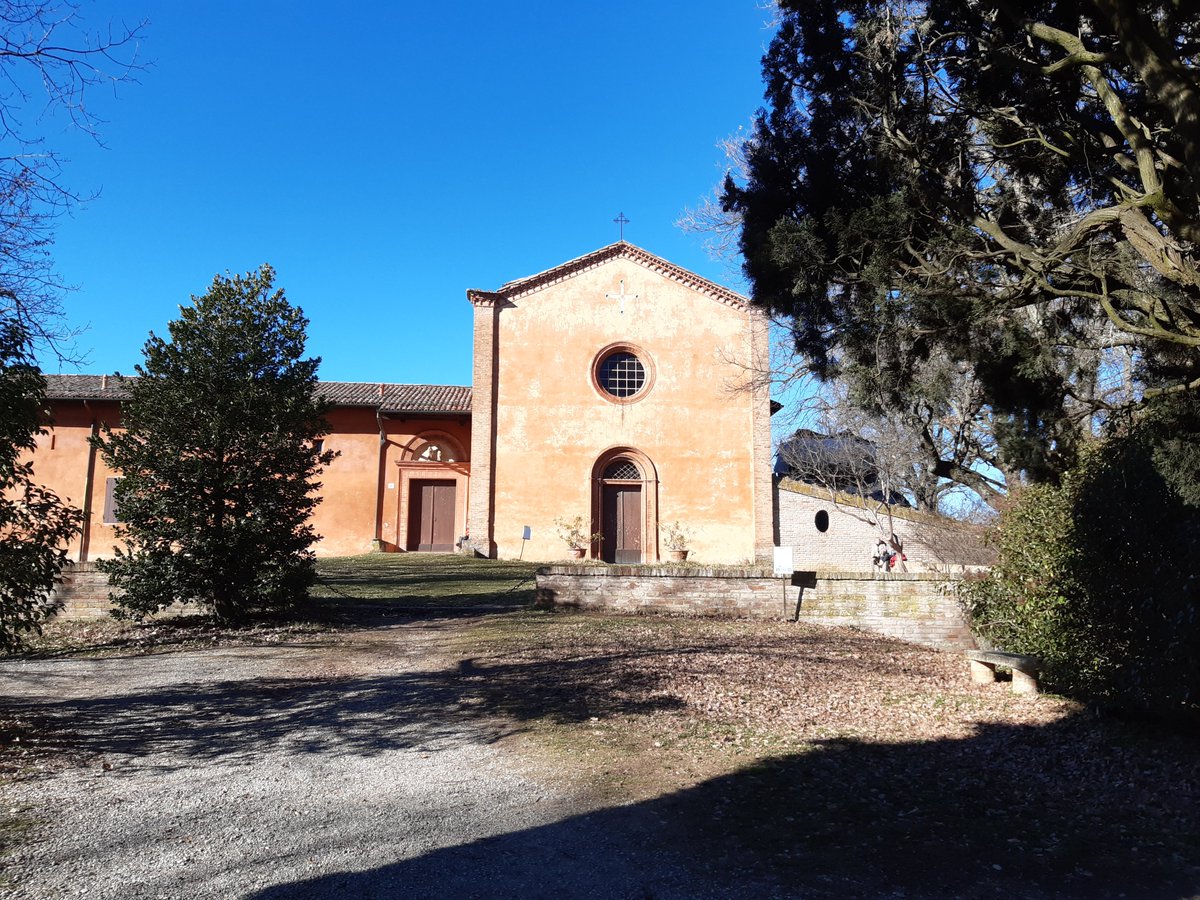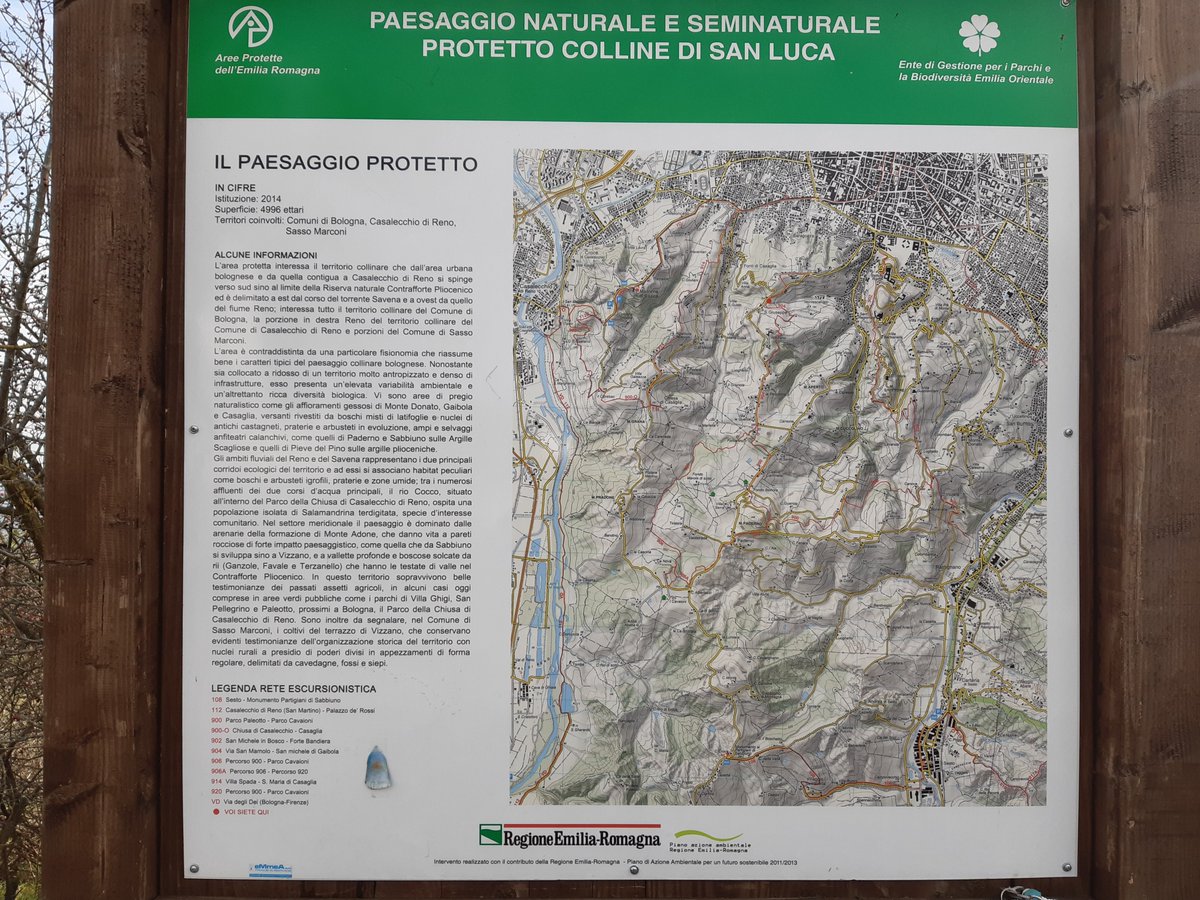1/ Since it's one of those, unfortunately too rare, days when one can see distinctly the snow-capped Alps from Bologna's hills, I will bring you in a virtual walk to show why, again, voluntary planning choices matters.
This time, in a bit more postcard-y trip
This time, in a bit more postcard-y trip
2/ First, let me confess: even as a grown person, I kind of get excited like a kid when that happens. The closest Alps are some 150km far as crows fly and what is normally a 2h30 drive away is suddenly in front of you. It's a kind of magic, you can't convince me of the opposite.
3/ Anyway, preserving the hills from urban development was one of the big strategic choices of urban planning in Bologna in the 1960s, together with the preservation policies for the old city and the two riverside regional parks.
4/ Since the end of 19th century and during the first half of the 20th, there was already ongoing development outside of the city center toward the hills, mostly (but not only) middle-upper class "villini" or small apartment buildings
5/ Even before, like in many Italian cities (but less so than in Florence or Rome), there was already an established belt of large estates, out-of-town villas of the urban gentry (Northern Italy is not England, the wealthy gentry is historically much more urban)
6/ With mounting pressure for development in the postwar urban boom, the more urban hills just south of the city center were targeted by developers purchasing premium land owned by the cash-strapped aristocracy
7/ It's at that moment that the city step in and says: no, the hills are not up for development, sorry. The hills will not only be protected, but we will create a network of parks and leisure areas easily accessible from the city
8/ One of the most interesting examples is "villa Ghigi". Once a large estate of the Ghigi family, it was acquired by the city and converted into an "agricultural-landscape park"
9/ To ease the purchase, the city compromised with the owner, allowing a few, mostly luxury or upper-class, constructions in the lower part of the property bordering the already urbanized area down the valley, while keeping the rest unbuilt, as a public park, including the villa
10/ The area is a partly cultivated park (fruit trees mainly) with some agricultural buildings reconverted for didactic activities. I've been many times there as an elementary school student for the so-called "green week", to make activities of nature discovery, hiking etc.
11/ a network of paths brings you out of the park to other areas. Most of the land is privately owned, but there is a wide network of low traffic country roads, paths and other accessible parks and sites punctuating the hills, like several hilltop churches and hermitages
12/ Of course, that planning choice was against the "natural" trends of the market: the hill is right behind the city center, so is a premium real estate. But the city considered it also a main regional public asset for "free" leisure on a very short distance from the city
13/ Of course, not everything is perfect. A 2006 action plan for the hilly area pointed to the difficult access, the lack of continuity between the parks, and other fruition problems the city has been slow to address since, as there is lack of funds and other priorities.
14/ Nevertheless, the hills, "i colli", remain a beloved spot for escapades, hiking, resting, gathering, barbecuing etc., for both the elderly and the teenagers riding their "Vespas". To the point of being the refrain of a famous song of my teenager times: "Vespa 50 Special"
15/ It's also, ça va sans dire, a favorite spot for dating as a teenager who doesn't want to bring anybody home...
That alone makes it an important public asset.

That alone makes it an important public asset.

 Read on Twitter
Read on Twitter